It is not uncommon for people who have ridden motorcycles for much of their lives to suffer from some levels of deafness.
This is because motorcycles are extremely noisy.
Being prepared for noise is vital if you are going to reserve your hearing long into the future.
Below are 8 things you can do to make your helmet quieter and protect your ears when riding:
1. Get A Properly Fitting Helmet
Motorcycle helmets only offer maximum protection if they fit properly. They also only seal well if they fit properly.
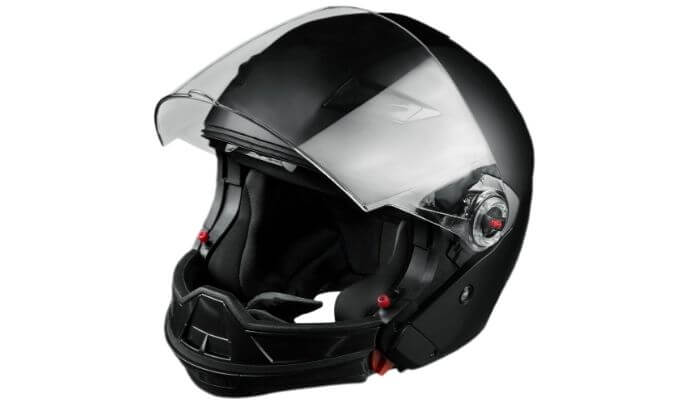
A helmet that is slightly too big will let air in and can be noisier than it should be.
In order to ensure that you get the correct sized helmet you should measure the circumference of your head at its widest.
Typically this measurement is taken from just above the eyebrows around the middle of the back of the head.
| Circumference of head | Helmet Size |
|---|---|
| 51-52cm / 20″-20.9″ | XXS |
| 53-54cm / 20.9″-21.6″ | XS |
| 55-56cm / 21.6″-22.4″ | S |
| 57-58cm / 22.4″-23.2″ | M |
| 59-60cm / 23.2″-24″ | L |
| 61-62cm / 24″-24.8″ | XL |
| 63-64cm / 24.8″-25.2″ | XXL |
Head shape will vary from person to person so you may find that a certain brand offers the best natural fit for your head shape.
Visiting a store and trying the helmet on and also getting a professional to fit the helmet for you is a good idea.
There should be no pressure points such as on the forehead of back of the head.
When you have found a helmet that you like try rotating your head from left to right in it.
If the helmet is a good fit then your cheeks should follow the movement of the helmet maintaining contact with both cheeks. A helmet that does this is unlikely to let in excessive air and be noisier than it should be.
If the helmet moves or slips at all then it is not the right size.
2. Wear A Balaclava
Balaclavas are a common motorcycling accessory accross the world, yes they may make you look like you’re about to rob a bank but they are worth wearing!
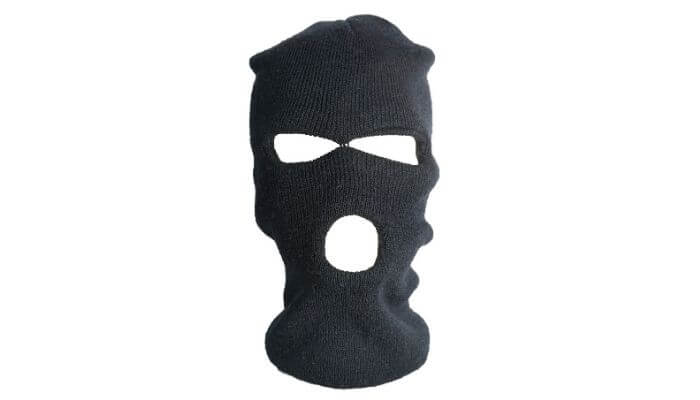
They are particularly useful if you are riding in cold or windy conditions, however they are also very handy for minimising excessive noise.
Wearing a balaclava adds padding to your head, minimising free space inside the helmet and thus reducing airflow, therby making your helmet quieter.
3. Use A Windshield Spoiler
The faster you go on a motorcycle the more wind resistance you encounter, this makes riding at higher speeds far noisier than riding at lower speeds.

Ideally your motorcycle windscreen should direct the air stream upwards and over your head however many windscreens, particularly the smaller ones you get on sports bikes are less effective at lower speeds and require you to be in a very low position for them to work effectively.
Adding a windshield spoiler to your bike can make a huge difference to the noise levels.
These are small windscreens made of acrylic which clip onto the top of your existing motorcycle screen giving you far greater wind protection.
Fitting one will take no more than five minutes and the benefits such as reduced noise, better aerodynamics and increased wind and insect protection make it well worth doing.
4. Adjust Your Riding Position
The type of bike you ride and the way you ride it have a big difference on how much wind noise gets into your helmet.

If you sit almost upright on a sports bike then you will be constantly smacked in the visor by a never-ending wave of air, however if you lower your position and almost crouch over the bike most of the air will fly right over you barely touching you.
Conversely touring bikes are designed to be ridden in a more comfortable upright position, with their big windshields that drive air up and over your head.
5. Check your Helmet Visor Is Properly Sealed
Vibrating parts can create a huge amount of noise inside your helmet.
Visors are one of the biggest culprits when it comes to vibrations.
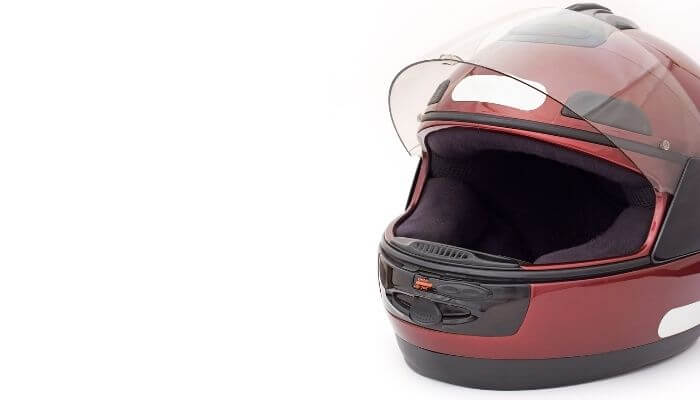
Most visors use pinlocks to seal the visors into place. These can be adjusted to alter the tightness of the visor.
Simply take a pair of pliers and twist the pinlock to either the left or the right to tighten or loosen the visor.
Adjust the pinlocks and test the seal until you are happy that your helmet is sealing tightly again.
6. Use Ear Plugs
Riding can be a very noisy business, especially if you ride at high speeds.
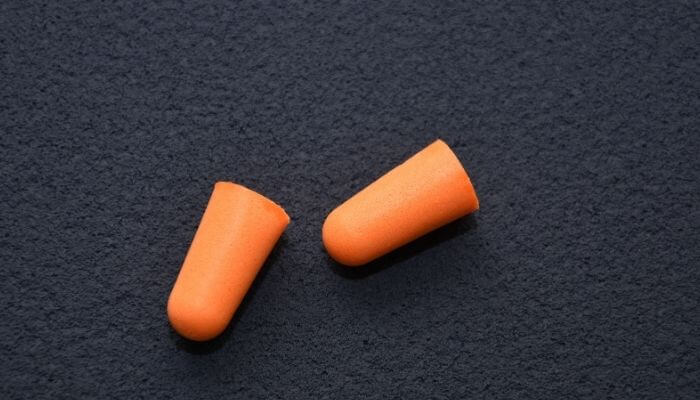
The speeds in our table below can do serious damage to your hearing if you are hearing noise at this level for prolonged periods.
105dB will permeanantly damage your ears if you are exposed to it for over 90 seconds or so.
Even speeds of 100kmh will cause hearing damage if you are exposed to it for over 15 minutes or so.
| Speed | Volume |
|---|---|
| 100 km/h | 94 dB |
| 120 km/h | 98 dB |
| 140 km/h | 102 dB |
| 160 km/h | 105 dB |
Wearing earplugs is therefore essential for any motorcyclists who plan on driving on the highway/motorway.
Earplugs protect your hearing primarily from engine noise but also wind and helmet vibration noise that you may experience.
7. Use Noise-Canceling Headphones
An more technological alternative to ear plugs are noise-canceling headphones.
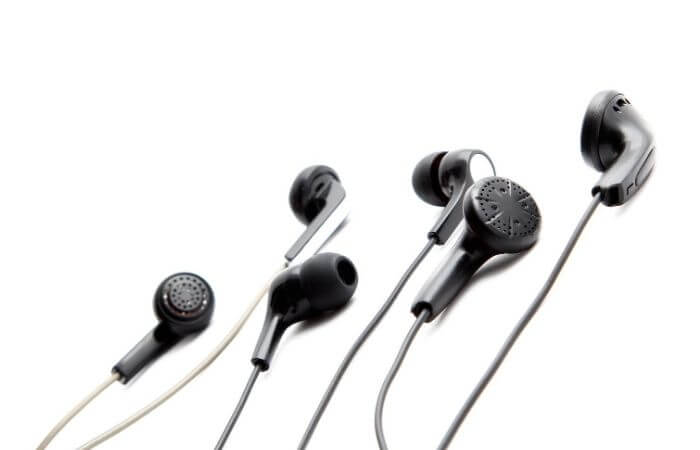
Many earmuffs designed for motorcyclists include noise-canceling headphones or speakers which can play music if you wish.
Noise-canceling headphones are definitely worth the investment for motorcyclists as they offer the perfect noise management solution which requires no input from the wearer, allowing you to focus on driving the bike.
They work by playing the opposite noise to the environmental noise that they pick up, effectively cancelling out environemntal noise so you just hear a neutral sound.
This means that if your speed drops from 100km/h to 50km/h the headphones will notice the change in environmental noise and will adjust their output without you having to do anything.
8. Wear A Scarf
A good scarf wrapped around your neck and tucked into your helmet will help prevent unwanted air from getting in and it will also reduce the volume of airborne engine noise too.
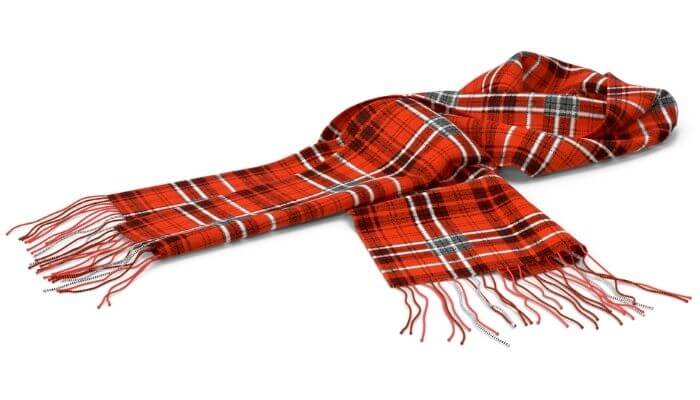
A scarf can make a huge difference to noise levels when riding.
Sure a perfectly fitting helmet is preferable, but if you need a quick and cheap solution then a scarf is very effective.
As an Amazon Associate I may earn a small fee from qualifying purchases at no extra cost to you. This helps us run the site, so thanks for your support!